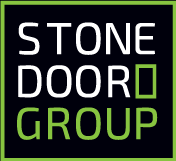Keeping pace with continuous software integration and development (CI/CD) is a challenge for modern IT. So is keeping up with the ever-expanding infrastructure, environments, and devices needed to support your users and business operations.
If you’re like many organizations, you have built and assembled homegrown automation over the years, resulting in what is now a patchwork of commands, scripts, and open-source tools for Linux, Windows, and network devices. As new projects came along, a developer or engineer wrote automation ad-hoc using whatever tool or language they preferred. In the long run, this approach is common, but not sustainable.
In fact, CIO.com has a report that in 2019, about two-thirds or 63% of organizations will invest in business process management/workflow management.
Let’s discuss three challenges with this homegrown approach, and ways to get you strategically leveraging IT automation to support the needs of the business for years to come.
Automation has human dependencies
The first challenge with homegrown automation is your IT staff have to be involved in the tasks. Scripts and commands require someone to remotely access each host device to run or install an agent, or to troubleshoot it when something doesn’t work as intended. This lack of a standard, push-model automation engine creates inefficiencies because your team is spending more time than necessary logging into servers, checking on configurations, and ensuring the automation works as intended elsewhere across DevOps. This is a hassle and a drain on valuable IT resources.
A study by IBM Institute for Business Value and Oxford Economics reveals that CIOs recognize that the IT infrastructure enables a competitive advantage. It enables CIOs to lean into workloads and trends for analytics, mobile, and social.
Mike Chuba, Research Vice President at Gartner says, “IT infrastructure leaders often feel that they are constantly in catch-up mode because it is difficult to quantify IT contributions.”
Therefore, CIOs must act quickly to create an enterprise infrastructure that is ultra agile, scalable and responsive to change so that they can prepare for the challenges of the new way of doing business.
This is where Ansible can help. Unlike homegrown automation that still requires a significant manual effort from your team, Ansible enables anyone in IT to describe in a human-readable syntax their desired end-state for a server configuration, security patch, or service state, and can expect it work everytime. This is because Ansible manages your entire infrastructure agentless and idempotently. After you describe your desired state in a Playbook, and provide the Ansible engine with an inventory of host addresses, the automation engine will automatically tunnel into each device using standard SSH and WinRM protocols and only make whatever changes are required to bring it into compliance. You can run the Playbooks as often as you like and Ansible will always return your servers, services, and even network devices to your desired state, leaving no software behind.
As you consolidate and migrate your homegrown automation tasks to Ansible, you will drastically improve the efficiency and productivity of your team, and have a more reliable automation solution for automated configuration, management, and deployment tasks.
Managing heterogeneous scale
The second challenge with homegrown automation is its inability to adapt to scale and heterogeneous environments. In just the last decade, IT has experienced a Cambrian-level explosion of technology options, resulting in countless combinations and complexity. As applications move to containerized microservices and storage and networking become software-defined, there are even more interoperability challenges on top of which cloud vendors, OSs, devices, networking, authentication, virtualization, and software you must support and sustain.
Gone are the days of prescribing exactly what everyone can use. The impact of this scale and complexity of the ever expanding environment is that IT is unable to respond quickly to the business, such as a growth initiative, an audit request, or a company merger. There are too many things to automate, too many ways to do it, and not enough people to do it. Developers and business leaders are tempted to pursue alternate solutions to meet their needs.
Ansible provides a way to centrally orchestrate a diverse fleet of servers and devices. There is no need to continue to crossbreed and replicate homegrown tools to address scale and complexity. This common orchestration framework will enable you to coordinate your IT efforts while rapidly adapting to heterogeneous IT environments at a virtually limitless scale.
Mitigating Risk
The third challenge is the risk that comes with tacit knowledge of your automation and configurations sitting with one individual or small team. There are three consequences of this:
1) Updates and fixes are limited to whatever time these individuals can spare, creating a bottleneck and delaying the critical benefits.
2) Automation architecture and programming languages will be based what these individuals know, and not necessarily what’s best for the wider organization (e.g. Python).
3) This non-standard approach leaves your organization susceptible to a flight risk and having proprietary knowledge walk out the door.
In contrast, Ansible was purpose-built for everyone in IT operations to understand and leverage. This powerful open-source framework creates a single source of truth and standard methodology for your entire DevOps organization.
Adopting an end-to-end IT automation that uses simple YAML scripting, known network protocols, and standard Python libraries, will ensure infrastructure knowledge is shared and secured with versioning, making it simpler to protect your IP and support. Furthermore, hiring people with Ansible experience is getting easier every year. This means new hires can learn your automation quickly.
Ansible is backed by tier one commercial vendors that are in lockstep with a powerful open-source community. Not only does Ansible get more powerful with each release, but the roadmap also anticipates the future challenges IT executives will face. This partnership has made Ansible the fastest-growing automation solution, enabling hundreds of thousands of organizations to get out of the automation business and benefit almost instantly from years of cooperative development.
We’re here to help
Here at Stone Door Group, we love Ansible because we get to see firsthand every week how it transforms organizations. We have been fortunate enough to implement hundreds of Ansible instances for our clients over the years. Chat with us about our experience, use cases and best-in-class practices we’ve established. No sales presentations or gimmicks, just a 30-minute shop talk with highly-knowledgeable experts who have been down this road.
About the Author
David Watson is a Red Hat Ansible and OpenShift consultant with a deep background in container platform implementation. He is part of a team of consultants at Stone Door Group, a DevOps Solutions Integrator, who help companies of all size execute on their digital transformation initiatives. To learn more about Stone Door Group, drop us a line at letsdothis@stonedoorgroup.com



